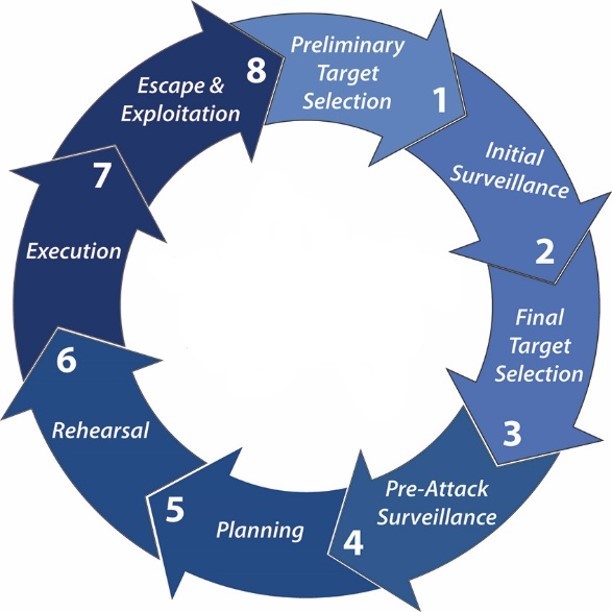Virtual Instructor-Led Training (VILT) courses provide general counter-IED information to a broad audience via online training with a live instructor using a virtual classroom platform. Perfect for participants with time availability constraints, most classes are approximately one-hour in length and can be taken independently. For more information and to register, visit the VILT Schedule and Registration webpage. Download a printer-friendly fact sheet for VILT Courses. The VILT Schedule Flyer can be downloaded by clicking here. OBP Training VILT course offerings are listed below.
Breadcrumbs
Virtual Instructor-Led Training (VILT)
Improvised Explosive Device (IED) Construction and Classification (AWR-333)
Description: The IED Construction and Classification course provides an overview of the various components required for IED production. The course is designed to provide foundational knowledge about the construction and classification of IEDs, including their function, components, classifications, and how they are constructed.
Course Length: This is a 60-minute training covering the following topics:
- Understanding IEDs
- Recognized IEDs through the SIMPC-E acronym
- IED categories and delivery methods
Audience: This course is designed for groups up to 50 participants and is intended for audiences such as:
- Critical infrastructure owners and operators
- Public safety officers - Emergency managers
- Security officers - Law enforcement officers
- Private sector security professionals
Accreditation: 0.1 Continuing Education Unit (CEUs) towards International Accreditors of Continuing Education Units (IACET) and 1 CEU towards Police Officer Standards and Training (POST) if the student's state approves.
Recommended Prerequisites: None. Download a printer-friendly fact sheet for the IED Construction and Classification (AWR-333).
Register Here
- Classification IEDs
- Components
- IED Production
Introduction to the Terrorist Attack Cycle (AWR-334)
Description: The Introduction to the Terrorist Attack Cycle course introduces common steps involved in planning and executing terrorist attacks. This course provides participants with the understanding of how to prevent, protect against, respond to, and mitigate attacks that use Improvised Explosive Devices (IEDs).
Course Length:This is a 90-minute training covering the following topics:
- What is a terrorist and identifying terrorism
- Understanding the terrorist attack cycle
- Countering terrorist attacks before they happen
Audience: This course is designed for groups up to 50 participants and is intended for audiences such as:
- Critical infrastructure owners and operators
- Public safety officers
- Emergency managers
- Security officers
- Law enforcement officers
- Private sector security professionals
Accreditation: 0.1 CEU towards IACET and 1 CEU towards POST if the student's state approves.
Recommended Prerequisites: None.
Download a printer-friendly fact sheet for the Introduction to the Terrorist Attack Cycle (AWR-334).
Register Here
- Prevent IED attacks
- Protect against IED attacks
- Respond to IED attacks
Response to Suspicious Behaviors and Items (AWR-335)
Description: The Response to Suspicious Behaviors and Items for Bombing Prevention course provides participants with a foundational introduction to recognizing and responding to suspicious behaviors and activities related to terrorist or criminal activities. This course also highlights what to do when encountering an unattended or suspicious item and to whom to report it.
Course Length: This is a 60-minute training covering the following topics:
- Normal behavior and suspicious behavior indicators
- Unattended and suspicious items
- Appropriate responses to suspicious behaviors, unattended items and suspicious items
Audience: This course is designed for groups up to 50 participants and is intended for audiences such as:
- Critical infrastructure owners and operators
- Public safety officers
- Emergency managers
- Security officers
- Law enforcement officials
- Private sector security professionals
Accreditation: 0.1 CEU contact hour towards IACET and 1 CEU towards POST if the student's state approves.
Recommended Prerequisites: None.
Download a printer-friendly fact sheet for the Response to Suspicious Behaviors and Items (AWR-335). Register Here
- Suspicious items
- Foundation of potential suspicious behaviors
- Bombing Prevention Awareness
Improvised Explosive Device (IED) Explosive Effects Mitigation (AWR-337)
Description: The Improved Explosive Device (IED) Explosive Effects and Mitigation course introduces the effects of an explosive detonation. It details the difference between blast, thermal/incendiary, and fragmentation effects, and describes the consequences on various targets. In addition, participants will learn about security measures and best practices that can help prevent or mitigate explosive effects.
Course Length: This is a 60-minute training covering the following topics:
- Blast, fragmentation and thermal effects
- Blast wave components resulting from a detonation
- Destructive consequences on structures/personnel
- Protective measures that mitigate explosives effects
Audience: This course is designed for groups up to 50 participants and is intended for audiences such as:
- Critical infrastructure owners and operators
- Public safety officers - Emergency managers
- Security officers
- Law enforcement officers
- Private sector security professionals
Accreditation: 0.1 CEU towards IACET and 1 CEU towards POST if the student's state approves.
Recommended Prerequisites: None.
Download a printer-friendly fact sheet for the IED Explosive Effects Mitigation (AWR-337). Register Here
- Blast Analysis
- Thermal/Incendiary Analysis
- Fragmentation effects
Homemade Explosives (HME) and Precursor Awareness (AWR-338)
Description: The Homemade Explosives (HME) and Precursor Awareness course provides foundational knowledge on HME and common precursor materials. participants will define HME and learn to identify common precursor chemicals and materials used to make HME. In addition, participants will learn how HME is used in an attack.
Course Length: This is a 60-minute training covering the following topics:
- Characteristics of common HME
- Precursor materials and equipment associated with HME production
- Perpetrator use of HME in an attack
Audience: This course is designed for groups up to 50 participants and is intended for audiences such as:
- Critical infrastructure owners and operators
- Public safety officers
- Emergency managers
- Security officers
- Law enforcement officers
- Private sector security professionals
Accreditation: 0.1 CEU contact hour towards IACET and 1 CEU towards POST if the student's state approves.
Recommended Prerequisites: None.
Download a printer-friendly fact sheet for the Homemade Explosives and Precursor Awareness (AWR-338). Register Here
- Identify common precursor chemicals
- Define HME
- Identify materials used to make HME
Protective Measures Awareness (AWR-340)
Description: The Protective Measures Awareness course introduces how to identify and mitigate facility security gaps. This course provides foundational knowledge about risk management and the three rings of security: physical, procedural/technical, and intelligence protective measures.
Course Length: This is a 60-minute training covering the following topics:
- Overview of risks
- DHS risk management process
- Physical, procedural and intelligence protective measures
Audience: This course is designed for groups up to 50 participants and is intended for audiences such as:
- Critical infrastructure owners and operators
- Public safety officers
- Emergency managers
- Security officers
- Law enforcement officers
- Private sector security professionals
Accreditation: 0.1 CEU contact hour towards IACET and 1 CEU towards POST if the student's state approves.
Recommended Prerequisites: None.
Download a printer-friendly fact sheet for the Protective Measures Awareness (AWR-340). Register Here
- Identify and mitigate facility security gaps
- Risk management
- Three rings of security
Surveillance Detection Principles (AWR-940)
Description: This course provides public safety and security professionals with the knowledge and skills to employ the fundamentals of surveillance detection for bombing prevention related to a facility/system or a planned or unplanned event and to recognize hostile surveillance activity.
Course Length: This is a four-hour training covering the following topics:
- Hostile operations and the terrorist attack cycle
- Detecting hostile surveillance activity
- Vulnerability assessments and surveillance
- Hostile surveillance red zones and positions
- Five elements of a surveillance detection plan
Audience: This course is designed for groups up to 50 participants and is intended for audiences such as:
- Critical infrastructure owners and operators
- Public safety officers
- Emergency managers
- Security officers
- Law enforcement officers
- Private sector security professionals
Accreditation: 0.4 CEUs towards IACET and 4 CEUs towards POST if the student's state approves.
Recommended Prerequisites: None.
Download a printer-friendly fact sheet for Surveillance Detection Principles (AWR-940). Register Here






